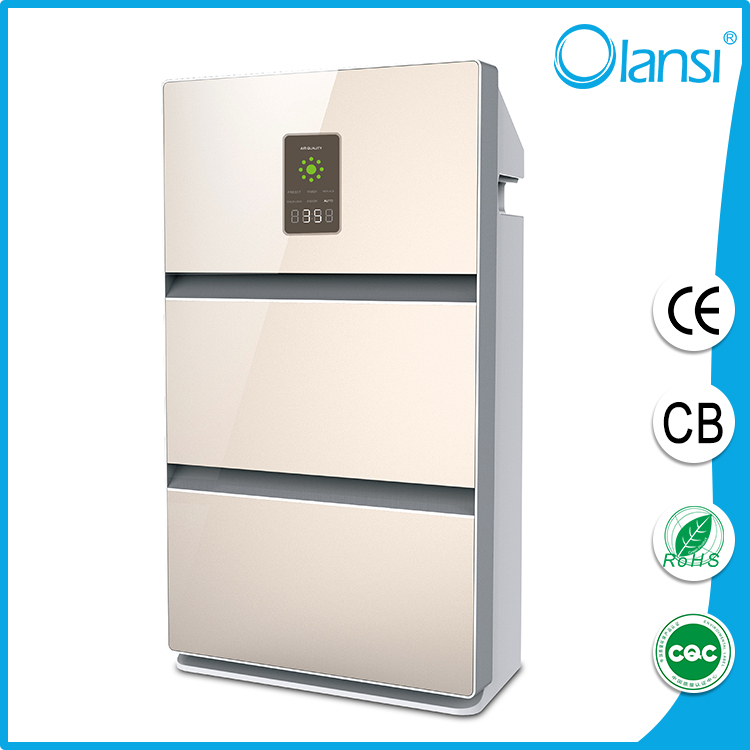Whole-House Air Purifiers: Efficiency Report
Manufacturers say their newest designs of whole-house air purifiers reduce the amount of ozone that’s in the home through the use of carbon filters, which appears plausible. However, you still should be wary about claims of overall effectiveness.
The push for healthier indoor-air quality by Environmental Protection Agency and the green-building movement has fueled the market for whole-house air purifiers in today’s homes. According to market-research group Freedonia, sales of portable and whole-house air purifiers are expected to rise by 4.8 percent annually to $1.7 billion in 2014.
As concerns about the effects of poor indoor-air quality have increased, manufacturers have marketed whole-house air purifiers as capable of doing more than ever before—including helping consumers who suffer from chronic respiratory illnesses, such as allergies and asthma. Although studies indicate that some claims might have merit, other claims are misleading.
In 2009, Food and Drug Administration issued cease-and-desist orders to 10 manufacturers that claimed that their whole-house air purifiers could remove the H1N1 flu virus. FDA’s approval of air purifiers extends only to models that are considered commercial-grade and are approved as a medical device in hospitals and laboratories. Such models may make this virus-killing claim, says Sarah Clark-Lynn of FDA. As of press time, no portable or whole-house air purifier that’s marketed to the consumer can treat, prevent or remove the H1N1 virus, Clark-Lynn says.
CARBON CONCLUSION. When it comes to whole-house air purifiers, the biggest change in the past 3 years is the increase in the number of units that include carbon filtration to address ozone.
The emission of ozone is a particular problem with whole-house electronic air cleaners, which apply an electric charge to trap irritants on plates of filterlike grids. (The other type of whole-house air purifier—media filter cabinets—moves air through a filter that must be replaced every so often.)
Seven manufacturers now have models of both types of whole-house air purifiers that have carbon prefilters and final filters. The use of carbon filters not only removes odors that are left behind from cooking and tobacco smoke, but it also captures ozone (and volatile organic compounds, or VOCs), manufacturers say.
The ozone that’s captured isn’t just the ozone that’s produced by electrically charged rods that are in whole-house air purifiers. The latest whole-house air purifier from Lennox, which is called PureAir and was released in 2012, helps to eliminate the ozone that occurs naturally in highly populated areas and collects in a home, says Kevin Lyons of Lennox. It reduces the ozone that’s produced by electrical motors, cleaning chemicals, home furnishings and automobile emissions in the garage. Lennox says the carbon filters that are in the PureAir reduce ground-level ozone that forms inside of a home by 50 percent. Other manufacturers make similar claims but without a specific reduction figure.
Models that have carbon filters start at $239, compared with $130 for similar models that have a only standard mesh filter. Based on our conversations with manufacturers, we believe that increasingly more models will include carbon filters in the next 3 years.
No test data confirm the effectiveness of ozone removal by a whole-house air purifier, but Brett Dillon, who owns IBS Advisors, which is an energy-efficiency consulting company, tells us that whole-house air purifiers that are fitted with carbon filters can be effective at clearing ozone and VOCs. However, he points out that the efficiency of carbon filters decreases over time. Also, depending on the type of filter that’s used, areas that have high humidity also might decrease the effectiveness of carbon filters.
Three experts tell Consumers Digest that a big part of a whole-house air purifier’s effectiveness is how well that it’s maintained. The introduction of carbon filters made us wonder whether this type of filter shortened the recommended interval in which you should replace the filter. Happily, that doesn’t appear to be the case. Manufacturers say carbon filters should be changed every 3 months—the same as standard filters. Unfortunately, you should get ready to reach for your wallet anyway. The cost of a replacement carbon filter ranges from $35 to $60. A standard filter costs about $60 for a year’s supply, or $15 every 3 months.

